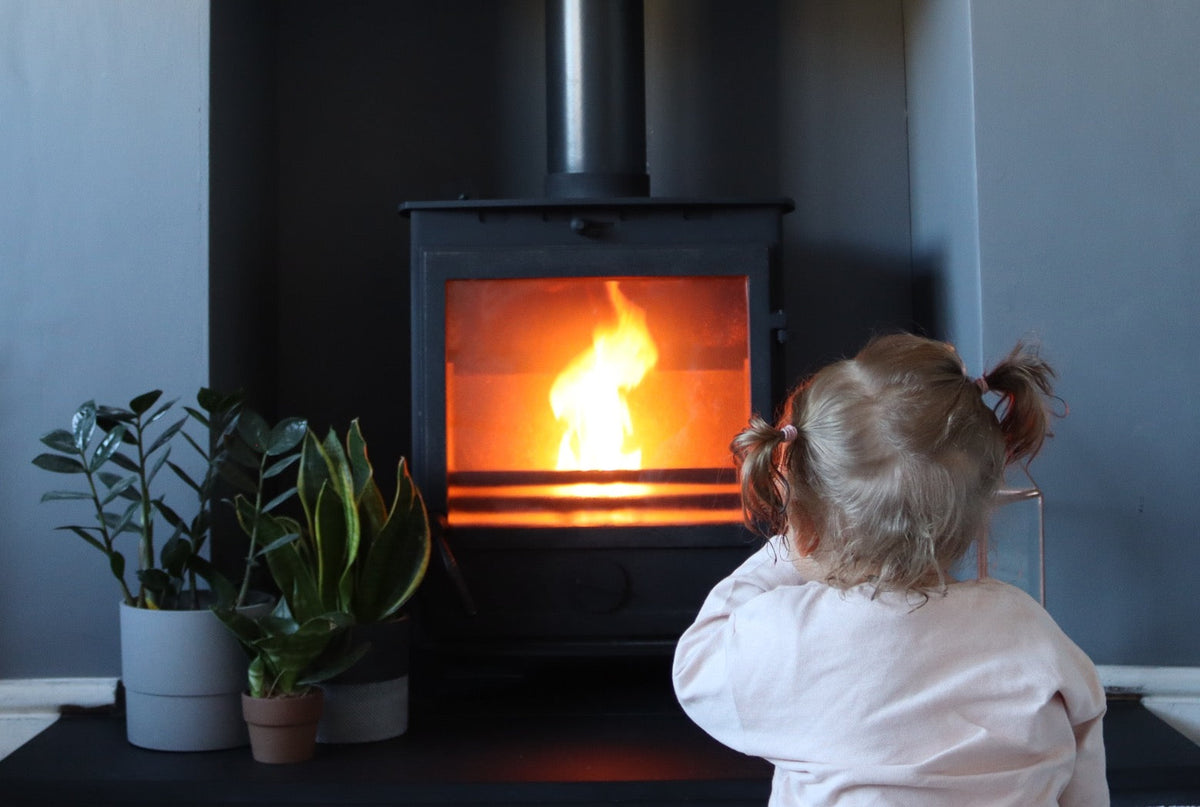

As log burner season’s well and truly here, it's the perfect time to share our essential safety tips to ensure your wood-burning experience is both cozy and safe.
Safety may not be the most thrilling topic 🥱 but we all like staying alive and don’t worry, we’ll keep it short and sweet!
Contents - How to use a Log Burner Safely
Ensure Your Log Burner is Registered with an Approved Competent Persons Scheme
To guarantee safety and compliance with the latest regulations, make sure your log burner is installed and/or certified by a professional registered with HETAS or and alternative competent persons scheme. This ensures that it meets all necessary safety standards, keeping your risk to a managed minimum. Find your local HETAS engineer here.
Install a Carbon Monoxide Detector
Burning wood can produce carbon monoxide, a colourless and odourless gas. A carbon monoxide detector is a must to alert you to any dangerous buildup, keeping your household safe.
Read more on the HETAS website here .
Have your Chimney Swept Regularly
A clean chimney is a happy chimney! Regular sweeping - at least once a year - is essential to remove dangerous soot & creosote buildup and ensure your chimney functions safely and efficiently. An annual chimney sweep certificate also likely ensures your home insurance is valid in the case of a fire caused by your log burner.
Read more on our full blog below:
Only Burn Dry Wood
The key to a clean and efficient fire is dry wood. Always use kiln-dried or well-seasoned wood with a moisture content below 20%. Wet logs not only burn inefficiently, but they also produce more smoke, which can lead to soot and/or creosote buildup in your chimney, which is a fire hazard. Read more below:
Keep Those Vents Open - No Smoky Fires
Nothing ruins the ambiance of sitting round the log burner faster than a room full of smoke… but more importantly, a smoky fire will increase soot and/or creosote build up and increase your risk of a chimney fire. An added benefit is that fire with an energetic flame keeps emissions to a minimum, when compared to a smouldering fire.
Be Smart with Wood Storage
It might be tempting to store your firewood right next to your log burner for easy access, but doing so is a fire risk. Ensure your logs are stored at a safe distance to prevent heat or wayward embers from igniting them – all wood stoves come with instructions on safe distances to combustibles, so make sure you follow them!

Use Heatproof Gloves & a Companion Set
When dealing with high temperatures and burning wood, always use heatproof gloves and the right tools.
A good companion set, including a poker, tongs and shovel, will help you manage your fire safely without the risk of burns.

Never Use Accelerants
This one should be obvious, but you'd be surprised! Avoid the temptation to use liquid fire starter fluid, which can cause dangerous flare-ups or spills. Stick to natural firelighters and kindling to get your fire started safely.
Don't Overload your Log Burner
Piling on too many logs at once can lead to overheating, which risks damaging your stove and even starting a fire, and can result in hot embers falling out the front of the stove when lit. Add logs gradually and maintain a controlled burn at all times.
If you're still reading, thanks for sticking with us this long! We love our log burner as much as you all do, but it's important to know how to use a log burner safely as part of responsible ownership and operation of a wood burning stove.
As always, if you have any questions, please don't hesitate to email us at info@love-logs.com.
Found this useful?
We'd love it if you shared it with your fellow log burner enthusiasts!







